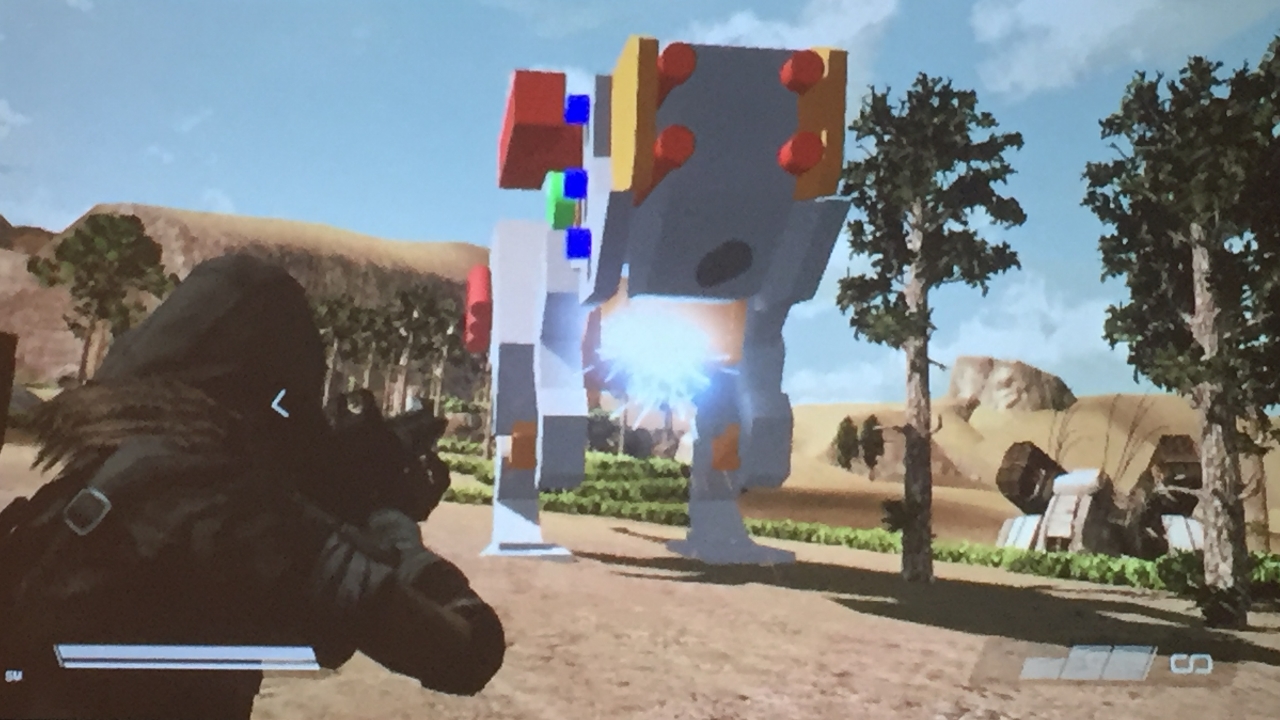Horizon Zero Dawn's mechanical animals were inspired by angry chickens and emus fighting kangaroos
A little YouTube research goes a long way

Watching the BBC's phenomenal Planet Earth series multiple times won't magically make you a game developer - but it sure comes in handy when you're trying to animate believable creatures. The mechanized fauna of Horizon Zero Dawn are integral to the appeal of its post-post-apocalypse, making the open-world environment feel like an untamed, lived-in ecosystem. But with the Killzone series so focused on human silhouettes, Guerrilla Games had its work cut out when designing 25 different species of machine, including plenty of agile quadrupeds and oddly proportioned bipeds. Fortunately, the natural world was an ample source of inspiration when animating all that wildlife, as lead animator Richard Oud explained during his GDC 2018 talk "Bringing Life to the Machines of Horizon Zero Dawn."
The first order of business was getting the team up to speed on how these creatures should move. That meant bringing in experts like Stuart Sumida, a paleontologist who's consulted on animal anatomy for films like Kung Fu Panda and Disney's Tarzan. It also involved watching hours upon hours of nature documentaries: "I think I've watched every single BBC documentary out there 50 times already," said Oud. Once the concepts for each machine (including attacks and defining characteristics) were in place as part of a massive game design document, Oud and his team got to work on bringing these robots to life. "Sometimes it was really obvious what the real-life counterpart was, but we still wanted to keep making things with an open mind," said Oud. "That meant doing a lot of research and really keeping our eyes open."
Enter: viral YouTube videos of animals behaving in bizarre, often hilarious ways. For instance, the colossal, bird-like, bipedal Bellowback and its fluid-flinging attacks were inspired by footage of a real-world scrap between an emu and a kangaroo. The way the emu curls its neck before an aggressive strike reminded Oud of a pitcher throwing a baseball, which fit perfectly for the animation where the Bellowback launches its volatile cargo at Aloy.
While animating the Rockbreakers, those quadrupedal 'bots that can burrow underground, Oud happened to walk past a coworker's desk when they were watching nature doc footage of sea lions fighting. "The thing that I like about it is how heavy they look, but they're actually still pretty agile, and there's so much power behind them," said Oud.
Meanwhile, over in The Frozen Wilds DLC, the Frostclaw immediately evokes a robo-bear with its claw swipes and roars - "but to me, it was all very predictable," said Oud. "It didn't have that one characteristic that starts to make the machine feel unique." Then Oud remembered his girlfriend's affinity for red pandas - and their adorable, feisty tumbling served as the basis for the distinct, surprising roll attacks which make the Frostclaws stand out.
Lastly, the Longleg - which is clearly a giant, angry chicken made of metal - needed a scratch attack. And what better inspiration than footage of someone being besieged by particularly irate roosters? "I just straight copied it over [to the game] - I didn't even try to make something else out of it," laughed Oud.
As an added bonus, Oud offered a look at the iconic Thunderjaw in its earlier prototype stages, looking like a hulking Lego dinosaur suitable for ages 4 and up. Even at this very early stage, the team knew they wanted a female protagonist - so Killzone 3's Jammer is the stand-in for the hero who would eventually become Aloy. And from the very beginning, there were plans to let you use pieces of the machines as weapons once they've been broken off - which looks extremely goofy when you see a Tetris-like chunk flying off this rudimentary Thunderjaw.
Weekly digests, tales from the communities you love, and more

Get the best games and entertainment news, reviews, tips and offers delivered to your inbox every week by signing up to the GamesRadar+ newsletter today.
Lucas Sullivan is the former US Managing Editor of GamesRadar+. Lucas spent seven years working for GR, starting as an Associate Editor in 2012 before climbing the ranks. He left us in 2019 to pursue a career path on the other side of the fence, joining 2K Games as a Global Content Manager. Lucas doesn't get to write about games like Borderlands and Mafia anymore, but he does get to help make and market them.



